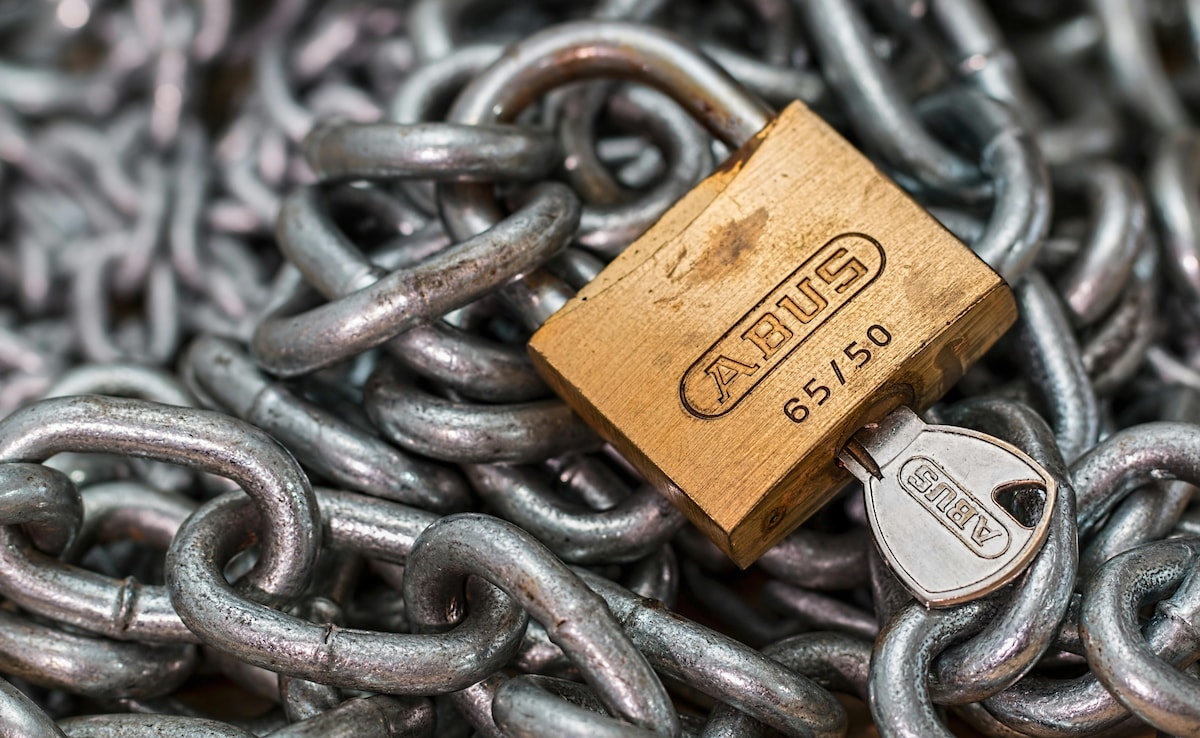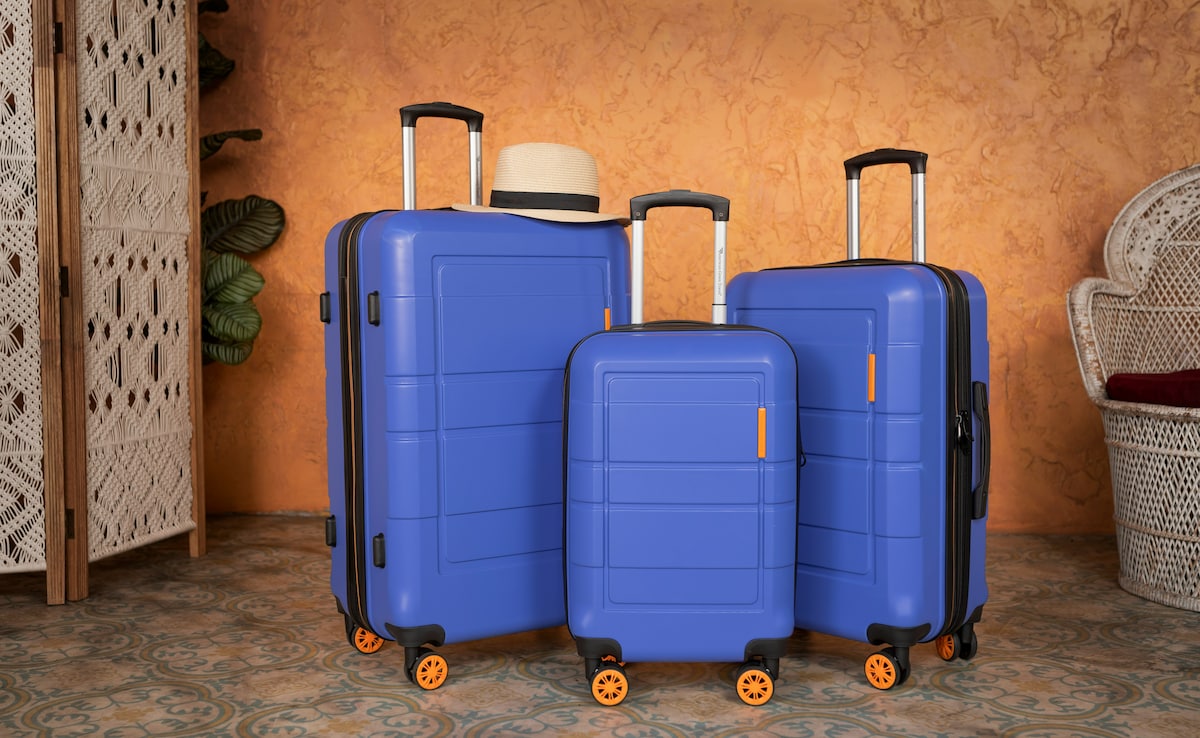
Securing your luggage with a small padlock often feels like a sensible step, especially when you are handing over your bag to an unseen process and trusting that it will reappear safely at your destination. Airports today focus on speed, layered checks, and efficient screening, yet many travellers still rely on padlocks because they seem like the simplest way to stop unwanted access. However, the sense of safety these tiny locks provide is mostly surface level. What appears protective from the outside can invite more complications, delay inspections, attract unnecessary attention, and fail in moments that actually matter. If you have wondered whether a padlock is genuinely useful or merely symbolic, here is a clearer look at why it may not offer the security you think it does and what works far better for keeping your luggage safe.
Also Read: Why Do Airports Make You Remove Your Laptop? The Real Reasons Behind Security Checks
Why You Should Not Put A Padlock On Your Luggage
1. Padlocks Can Be Easily Broken Or Picked

Photo: Pexels
Many travellers assume that a metal padlock creates a dependable barrier, but frequent flyers and experienced handlers know how quickly these locks can be defeated. Basic tools can snap a latch, a slight twist can break the hinge, and a skilled hand can pick many locks within seconds. Even the sturdier versions offer only temporary resistance. Since checked luggage moves through areas that passengers never see, tampering often goes unnoticed until much later. This makes the padlock feel more like a visual comfort than real protection, setting the tone for why it is not as secure as it appears.
2. Non TSA Locks Are Cut Open During International Security Checks
As you move from physical breakability to official screening, the next issue becomes even more practical. If you are travelling internationally, particularly to countries like the USA, your luggage is more likely to be flagged for inspection if it carries a non TSA approved lock. Security officers are authorised to break these locks if required, which means your padlock may not even survive your outbound flight. Travellers often find their locks cut, their bags reopened, and their belongings placed back in a hurry. Since airport teams do not track or replace damaged locks, your luggage remains unlocked for the rest of the journey. This reinforces that padlocks work against the inspection process rather than with it.
3. Padlocks Can Attract The Wrong Kind Of Attention

After official checks comes another angle: perception. A locked suitcase can unintentionally signal that it holds valuables, which is the opposite of what you want. Thieves in airports, transit zones, and hotel lobbies tend to look for bags that appear worth protecting. A padlock can make your luggage stand out, whereas a plain, well-organised bag with subtle security features blends into the crowd. This shift from visibility to discretion highlights that security is not only about physical barriers but also about avoiding unnecessary attention.
4. Many Bags Can Be Opened Without Touching The Lock
Once you consider perception, the next problem is the luggage design itself. Soft suitcases with standard zippers can be opened easily using a pointed object like a pen. The zipper teeth separate, the bag opens, and once the thief is done, they can slide the zipper pull back to reseal it, leaving no trace. This method bypasses the padlock entirely, which shows that the lock is often irrelevant. Unless your luggage has tamper resistant zippers or a hard shell closure that prevents such intrusions, a simple padlock offers limited real value.
5. Padlocks Do Not Protect Against Mishandling Or Delays

After looking at the physical and structural issues, the final concern is the part most travellers forget. Many problems with luggage involve mishandling, delays, misrouting, or general wear and tear. A padlock does nothing to prevent these common issues. Smart packing, correct labelling, and real time tracking tools provide far better odds of your bag reaching you safely. This brings the argument full circle. A padlock does not protect your luggage from the risks that matter most during air travel.
What To Use Instead Of A Padlock | How To Keep Your Luggage Safe
Since a padlock offers limited protection across multiple scenarios, safer alternatives work far better and cooperate with security procedures instead of complicating them.
Tamper Resistant Zippers: These are designed to lock into place and cannot be forced open with simple objects.
Cable Ties: Light, inexpensive, and immediately noticeable if someone cuts or replaces them.
Luggage Straps With Built In Combination Locks: These offer external reinforcement, reduce stress on zippers, and add controlled access.
Suitcases With Integrated Locking Systems: Built in locks tend to be stronger and more reliable than separate padlocks.
These tools focus on practicality, visibility, and airport friendly security, which makes them far more effective overall.
Also Read: Why Do Train Tracks Have Small Stones Around Them? 5 Fascinating Reasons
Smart Luggage Security Tips Every Traveller Should Know

Photo: Unsplash
Since a padlock alone cannot protect your belongings, effective luggage security comes down to the habits you follow while packing and travelling. These steps strengthen everything you have done so far.
Keep Valuables In Your Cabin Bag
Jewellery, watches, electronics, cash, and important documents should travel with you. Checked luggage faces the most risk, so keeping valuables nearby reduces uncertainty.Label Your Bag Clearly, Inside And Out
Add a luggage tag on the outside and a name card inside. Clear identification helps airlines return misplaced luggage quickly and prevents mix ups on busy carousels.Use A Luggage Tracker
Compact Bluetooth or GPS trackers allow you to monitor your bag throughout the journey. They are especially helpful during layovers and at busy international airports where luggage moves rapidly between teams.Photograph Your Luggage Before Checking It In
Take a quick photo of your bag to record its appearance and condition. If you notice damage or tampering upon arrival, you have proof to support your airline claim immediately.Choose Bags With Minimal External Pockets
Exterior pockets are the easiest to access without attracting attention. A streamlined suitcase with fewer openings reduces the chance of interference and offers more consistent security.
The next time you are travelling by air, skip the padlock and focus on smarter tools and habits that offer real protection rather than a false sense of security.
Track Latest News Live on NDTV.com and get news updates from India and around the world

